Additional notes (click to expand)
Medicinal
Culpeper: ‘Consolida major. Comfrey. I do not consider the leaves to be so vertuous as the roots’. As far as the roots are concerned he says: ‘it is excellent for all wounds, both internal and external, for spitting of blood, ruptures or burstness, pains in the back, it strengthens the reins, stops the terms and helpeth haemorrhoids. The way to use them is to boil them in water and drink the decoction.’
Culpeper, Nicholas. (1650). A Physical Directory . London, Peter Cole.
Nomenclature
Other common names: ALUM; BACKWORT; BLACK ROOT; BLACKWORT; BOHEMIAN COMFREY; BONE-SET; BRUISEWORT; COMFREY CONSOUND; GUM PLANT; HEALING HERB; KNIT-BACK.
Called Wartwurtz in German, but this may be the true Symphytum of Dioscorides - Symphytum tuberosum with yellow flowers.
Officinalis is an adjective for a medicinal substance. Male and female forms of the adjective are 'officinalis', the neuter form is 'officinale'. The adjective has to agree in gender with the noun it describes. Symphytum has a neuter ending (-um), so it is officinale .
Other use
This exists on one of the oldest plant paintings, the Johnson papyrus, a fragment of a 5th-century Greek codex from Egypt. The plant contains pyrrolizidine alkaloids which are liver poisons. Hepatic cirrhosis has been reported in low dose regular users, and liver damage in a baby whose mother drank comfrey tea. Occasionally it causes acute hepatic venous occlusion with massive, fatal, liver damage. It is also genotoxic and carcinogenic. Neither Pliny nor Dioscorides recommended it for internal use; Galen, however, does, and this was continued by Dodoens and his translators, but not by Fuchs. All recommend the crushed roots or leaves applied as a poultice to heal wounds. Culpeper, regrettably, recommended comfrey tea for almost everything. It is still widely used in herbal medicine, but in the UK it has been removed from all licensed products intended for internal use, being permitted only as an ingredient for products intended for external use on unbroken skin. Beware.
Oakeley, Dr. Henry. (2011). A Year in the Medicinal Garden of the Royal College of Physicians, revised edition. Royal College of Physicians, London.
link
Toxicity
Notes: The hairy leaves of comfrey might be expected to aid in blood clotting when applied to external wounds, in the same way as cotton wool acts when one has cut oneself shaving. Try Googling ‘Hepatitis’+‘Comfrey’ and you will receive 61,100 webpages (many of them duplicates) about the dangers of this herb. It contains pyrrolizidine and may cause acute hepatic venous occlusion with massive liver damage and occasionally death. Hepatic cirrhosis is reported in low dose regular users, and transplacental pyrrolizidine induce liver damage has been reported in a newborn whose mother had consumed herbal tea in pregnancy. It is also genotoxic and carcinogenic. In the UK it has been removed from all licensed products intended for internal use. It is permitted as an ingredient of products intended for external use on unbroken skin (MCA, 2002).
Oakeley, Dr. H. F. . (2013). The Gardens of the Pharmacopoeia Londinensis.
link
Contains Symphytine a pyrrolizidine alkaloid which is both genotoxic and carcinogenic.
van den Berg, S.J.P.L., Restani, et al., P.. (2011). Levels of Genotoxic and Carcinogenic Compounds in Plant Food Supplements and Associated Risk Assessment. Food and Nutrition Science 2: 989-1010.
link
Like the other members of Symphytum genus it contains pyrrolidizine alkaloids toxic to the liver and lung and possibly carcinogenic in the liver.
Professor Anthony Dayan, 2022
Humans/Pets. Harmful if eaten repeatedly.
HTA Guide to Potentially Harmful Plants, 3rd Edition (2022)
Geographical distribution
- Asia-Temperate, Caucasus, Transcaucasus
- Asia-Temperate, Middle Asia, Kazakhstan
- Asia-Temperate, Western Asia, Turkey
- Europe, Eastern Europe, Belarus
- Europe, Eastern Europe, Northwest European Russia
- Europe, Eastern Europe, South European Russia
- Europe, Eastern Europe, Ukraine
- Europe, Middle Europe, Austria
- Europe, Middle Europe, Belgium
- Europe, Middle Europe, Germany
- Europe, Middle Europe, Hungary
- Europe, Middle Europe, Netherlands
- Europe, Middle Europe, Poland
- Europe, Middle Europe, Slovakia
- Europe, Middle Europe, Switzerland
- Europe, Northern Europe, Great Britain
- Europe, Southeastern Europe, Bulgaria
- Europe, Southeastern Europe, Italy
- Europe, Southeastern Europe, Romania
- Europe, Southeastern Europe, Sicilia
- Europe, Southeastern Europe, Yugoslavia
- Europe, Southwestern Europe, France
- Europe, Southwestern Europe, Spain
Symphytum officinale L.
Family: BORAGINACEAEGenus: Symphytum
Species: officinale L.
Pharmacopoeia Londinensis name: Symphytum, Consolida major
Distribution summary: Europe, temperate Asia
Habit: Perennial
Hardiness: H7 - Very hardy
Habitat: Deciduous forests, damp, shady spots
Garden status: Currently grown
Garden location: Pharmacopoeia Londinensis 1618 'Leaves' (HSE 6)
Flowering months: May, June
Reason for growing: Medicinal, other use, toxic, traditional herbal registration
.JPG)
.JPG)
.JPG)
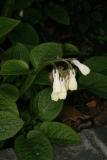
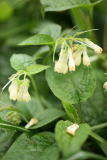
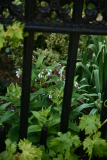
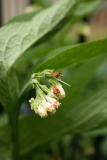
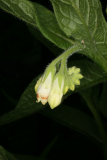
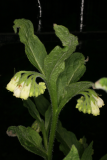

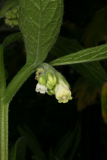
.JPG)